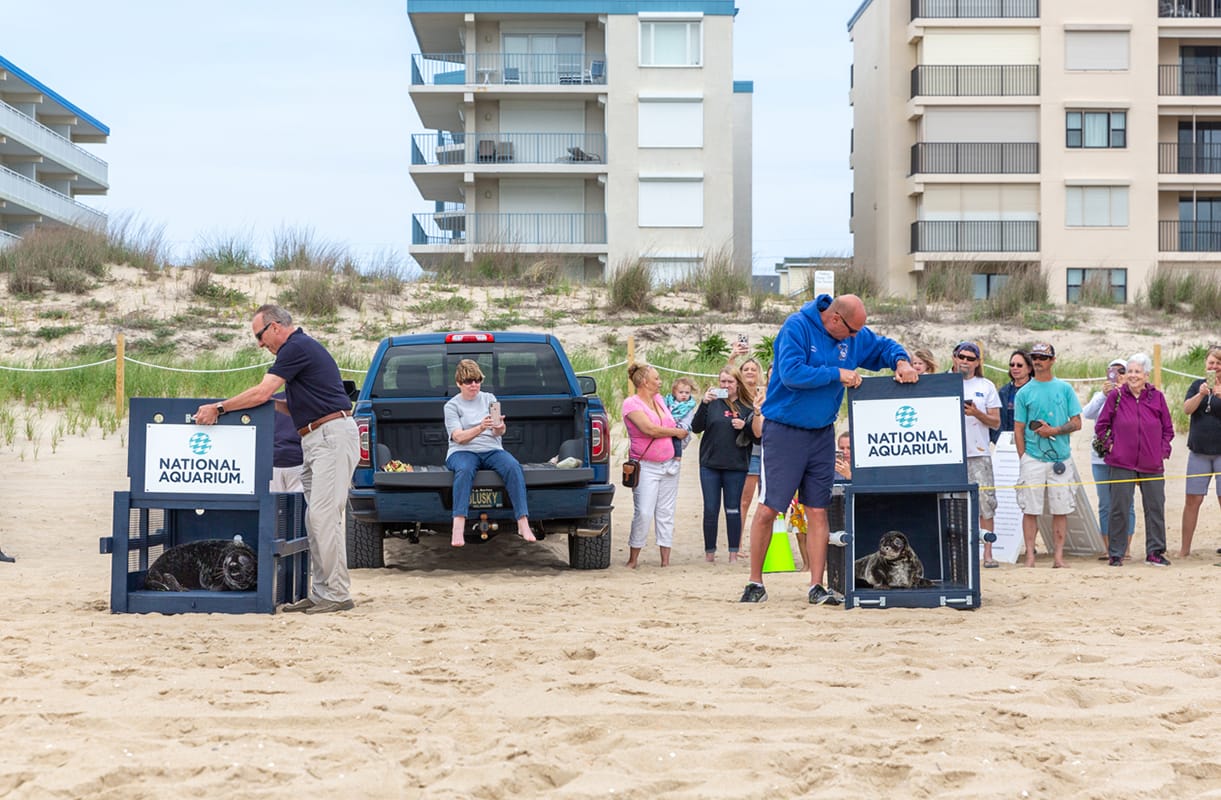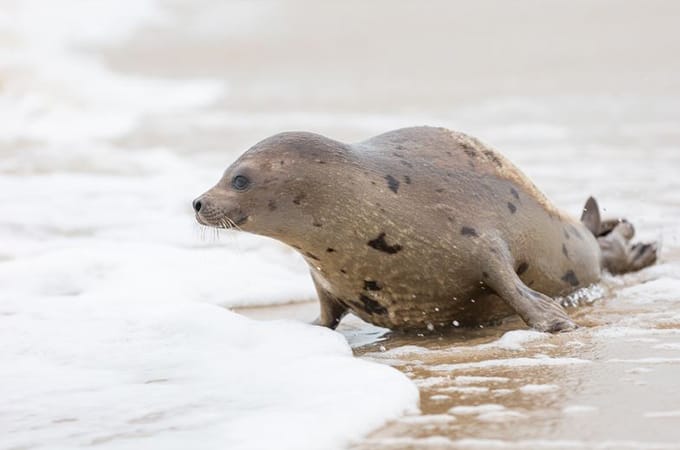
From the classroom to the coast
A student shares his unique internship experience with the National Aquarium in Baltimore
Brendan Cook, Biology Major
As a biology major, I came to Loyola University Maryland wanting to pursue the Pre-Veterinarian Track in Loyola’s Pre-Health Programs. Studying science at a Jesuit liberal arts school is a great opportunity, because it goes above and beyond learning just the facts and allows you to explore other aspects of the science and related fields that shed light on the subject in a new and thought-provoking way.
After a rewarding experience as an intern with the National Aquarium during my junior year, I refocused my goals to pursue a career in conservation or wildlife biology.

I learned that the National Aquarium offered internships during my sophomore year, when a classmate in my Animal Nutrition class had a really rewarding experience working with the Aquarium. My work study supervisors, Andrew Marshall and Scott Deamond, and my biology professors, Lauren Spearman, Ph.D., and Maren Blohm, Ph.D., encouraged me immensely in applying for the internship and even reviewed my résumé. I was and remain grateful for their support, mentorship, and guidance.
I applied to three different internships with the Aquarium, since they are competitive. There were 25 applicants from various universities in Baltimore, and only three students were selected for the internship with the Aquarium’s Animal Rescue program.
For nearly three decades, the National Aquarium’s Animal Rescue program has responded to, rehabilitated, and cared for stranded marine mammals and sea turtles along the more than 3,000 miles of Maryland coast. Through the course of my internship, the Aquarium admitted two harp seals and three grey seals. The harps were eventually released in Ocean City, Md., and Assateague Island, respectively.
I had the opportunity to witness the transformation of the seals, and the progress they made was incredibly rewarding.
On my first day at the National Aquarium’s Animal Care and Rescue Center, I was given a tour of the facility and debriefed on the rescue system and process. That day I noticed a juvenile harp seal named Marie. Marie was incredibly dehydrated and malnourished. She was relatively small for her age and she refused to eat anything, due to the fatigue induced by her dehydration. For the next week she was being tube fed fish gruel and given fluids via IV.
Within weeks, though, Marie seemed like a completely different seal. She had gained weight, she loved swimming, and she was actively foraging on her own, although her feeding behavior was still juvenile in nature. She was housed with another harp seal named Sally, who essentially taught her how to forage more competitively.

Getting to observe some of the animals’ behavior so close-up was a cool experience, especially the seals’ classic (and really cute) behavior of “banana-ing,” where they will bend their body into the shape of a banana.
Soon Marie tested negative for canine distemper and influenza B—and two weeks later, she was released back into the ocean. I watched her become a much stronger and healthier animal in the care of the Animal Health and Rescue teams, and it felt great knowing that I had played a part in getting her back to full health and returning her to the wild.
My internship also taught me about the natural history of seals and how to identify the different species that are most commonly rehabilitated. During the intake process, I was able to take notes on the seals’ physical condition, including the shape and the condition of their flippers, the animals’ breathing, heart rate, temperature, weight, and other aspects of their health.
As an intern, I regularly fed the seals, learning to throw them handfuls of fish at a time while ensuring they don’t get too territorial while feeding. It was one of my favorite aspects of my job.

Another daily activity that I enjoyed was performing water quality testing. In addition to performing the deep clean, we would also perform two water changes daily, and we would take water quality samples from the pools. This involved taking the temperature, salinity, and pH of the water.
My internship with the National Aquarium was both a rewarding and memorable experience, one that has influenced my future aspirations and my path beyond Loyola. I learned a great deal about the medical process—from administering oral medication to the animals and how to record respiration rates on seals to how to assist with the intake of a new seal patient. I experienced firsthand how rewarding the feeling of helping animals is.
Loyola’s diverse and rigorous class selection and the opportunities for biology majors have already given me an edge in the field, which will prepare me for pursuing a master’s degree or possible Ph.D. My internship afforded me the chance to acquire new skills and concepts from the professionals at the Aquarium that I can apply to my future field.
I hope to continue volunteering with the National Aquarium and working with their seal rescue team.
National Aquarium Animal Rescue Program
- Founded in 1991
- Responsible for responding to stranded marine mammals and sea turtles along more than 3,000 of Maryland coast
- Has successfully rescued, treated, and returned more than 200 animals to their natural habitats
- Rescued animals include numerous seals, sea turtles, and rough-tooth dolphins; a harbor porpoise; a pygmy sperm whale; and a manatee
Learn more about the biology program at Loyola University Maryland